Bunraku Puppet Theater - How To Watch Japan's Traditional Performing Art

Bunraku is one of Japan's traditional performing arts, alongside Kabuki and Noh. With a 300-year long tradition, Bunraku features magnificent puppets and dramatic plots. Learn about bunraku from three top performers and where to watch it.
Bunraku - Japan's Traditional Puppet Theater

”Nippon Bunraku”, performed in March 2019 at Harajuku Meiji Jungu-mae.
Bunraku, also known as ningyo joruri, is a form of Japanese puppet theater designated as a UNESCO Intangible Cultural Heritage. This form of performing art first appeared in Osaka during the Edo period around the 18th century. It has continued to be practiced and shown for centuries to this day.
Although the term “puppet theater” may conjure up images of performances for children, this is not the case for bunraku. In fact, the majority of plays are intended for an adult audience.
Plays are based on old Japanese folktales about heroes of the past, love stories between Edo period men and women, or stories about double suicides (shinju, when partners in love both commit suicide out of love). These themes have been considered entertaining for older audiences.
Bunraku is considered to be a Japanese traditional form of art, as is the case with Kabuki and Noh theater. However, not many people have ever watched a Bunraku show.
This article contains interviews with three prominent performers of Bunraku. Learn about the basics of this stage art and how to enjoy it best from the top figures in the world of Bunraku!
The Three Performer Roles in Bunraku
There are three major performer roles in Bunraku. First, we have the ningyozukai, the persons who control the movements of the puppets. The second performer role is that of the shamisen player, who plays the shamisen, a three-stringed traditional instrument. The third performer role needed in a Bunraku performance is called tayu, the story-teller.
This explanation alone probably isn’t enough to paint the picture, so take a look at the following video, first. Although it is in Japanese, you should be able to grasp the concept behind the art of Bunraku.
These three specialized parts -- the puppeteers, the shamisen player, and the narrator -- are necessary in order to create a Bunraku performance. People who wish to enter the world of Bunraku first decide on the role that fits him or her. Once they decide, they stick to that one role for the rest of their career, honing their skills.
We talked to three professionals of each role to find out more about what it means to be a performer in the world of Bunraku and how to best enjoy this art.
“The Art of Puppetry is a Collaboration”
Kanya Yoshida, an Omozukai Puppeteer
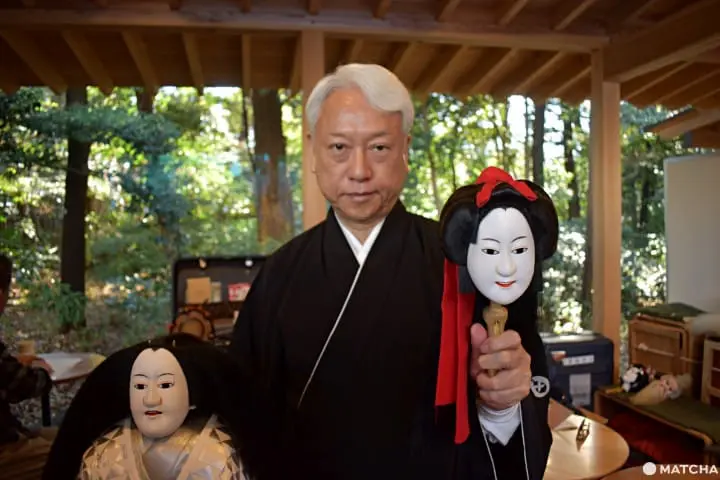
Kanya Yoshida is a veteran among professional Bunraku puppeteers, having devoted himself to this role for more than 40 years. He is a lead puppeteer, called omozukai in Japanese.
Bunraku puppets are controlled not by one, but by three people. The person who controls the legs is called "ashizukai". The one who controls the left arm is called "hidarizukai". The third person controls the right arm and the neck and is called "omozukai". They are each specialized in their role.
How Can Three People Control One Puppet?
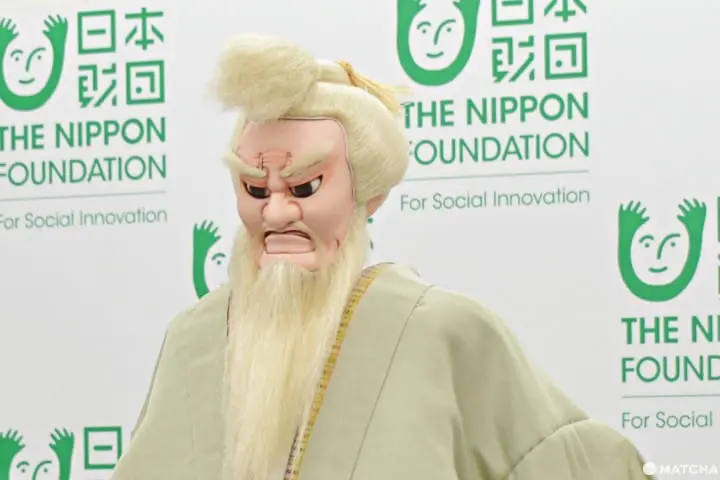
Most first-time spectators find it very surprising that the puppet almost seems alive during the show. How can three people controlling the puppet make every move appear so natural and run so smoothly? The secret behind their technique lies in the zu, the signal that the omozukai sends to the other two puppeteers.
“The task of an omozukai isn’t only moving the right arm and the neck. It is also very important for the omozukai to instruct the other two puppeteers about the next movement of the puppet, using various signals and hints.”
Rather than guiding the colleagues using the words such as “do this” or “do that”, the omozukai uses the puppet’s neck or the whole body to give directions on the next move, and even uses their own body to consequently send detailed “zu” signals to the other two masters on the stage.
Upon receiving the unspoken instructions, the hidarizukai and the ashizukai move the puppet accordingly. That way the roles of the three fuse into one cohesive unit, which gives the puppet that natural movement, making it appear alive and breathing.

The neck puppet is called gabu. The beautiful face of a woman turns into a horrifying expression in a second!
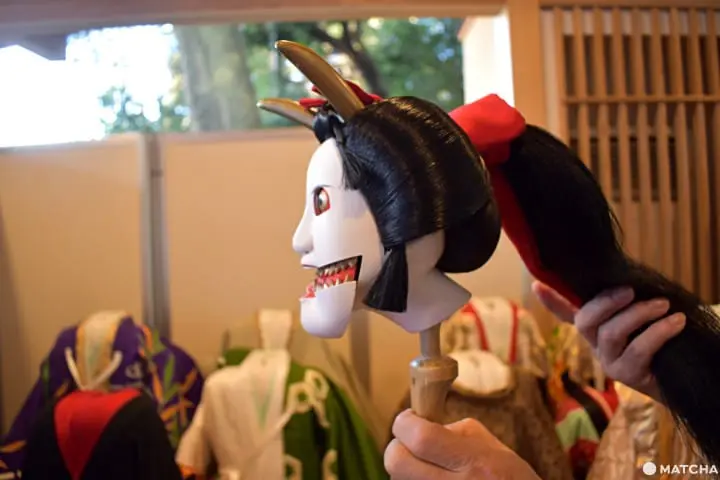
Controlling the facial expression using the thumb
Only One Rehearsal Before the Performance
Although one might think that even unifying their breath is crucial for Bunraku puppeteers, there are actually hardly any rehearsals together with the three prior to a performance.
“Usually, each one of us individually does image training for rehearsing. Practicing in performance with all three of us using the puppets is done only once before the main stage.”
Even though there are not many rehearsals, in order to become a skillful omozukai like Kanya, many training hours are needed. It varies by person, but it is said that an omozukai must first master the ashizukai for about ten years. Handling the tasks of the hidarizukai takes about 15 years, after which the performer can finally grasp the role of the omozukai.
Puppetry is all about learning and practicing the puppet’s movements, taking part in countless performances, receiving zu signals from the omozukai, and incorporating the art along the way. As one masters the basic tasks of the ashizukai and hidarizukai on stage, there is little need for prior rehearsals when the three puppeteers get together.
Creating Art with Others
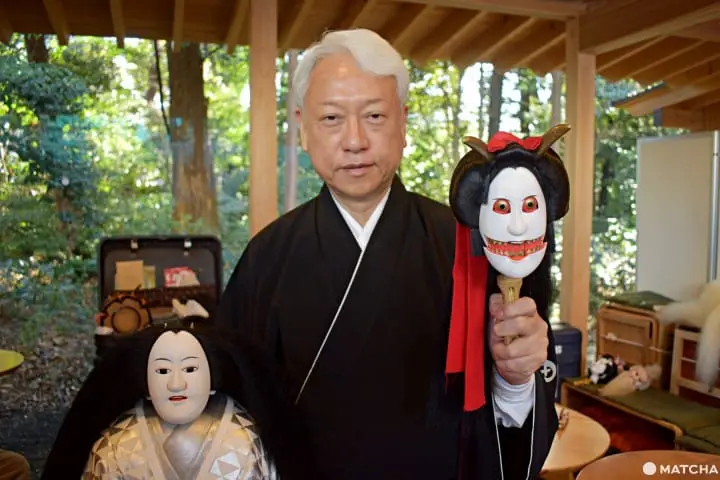
Mr. Kanya holding the gabu
Kanya, too, invested about 30 years into honing his skills as a puppeteer before becoming able to master the omozukai role. He once followed his master while entrusted with the role of ashizukai.
“My first teacher was Kanjuro Kiritake, the second Living Natural Treasure of Japan. I used to follow his lead as the ashizukai, and I had great fun doing it. Of course, it was mostly done following his lead, but Kanjuro used to give us (the ashizukai and the hidarizukai) freedom to take initiative to some extent. The three puppeteers unify to create one cohesive performance.
In order to make this unification, it is vital for the three puppet masters to coordinate in perfect unison. One’s own art is completed by the other masters. Therefore, we have to reexamine even the most basic things, such as how to interact and compromise with one another.”
Those witnessing a Bunraku performance for the first time are bound to be moved by the detailed and realistic movement of the puppets. Behind these phenomenal performances are decades worth of training and excellent coordination between the three masters.
”We Communicate Stories, Not Melodies”
Tomonosuke Tsurusawa, Bunraku Shamisen Player
While watching Bunraku, you might notice a string instrument being played constantly during the show. If you take a look at the right part of the stage, you’ll see the shamisen player.
To first-time spectators, the shamisen music playing might seem like the musical accompaniment, with the purpose of livening up the story. However, the role of the shamisen in bunraku plays is opposite to that of the accompaniment.
What is it all about, then?
We interviewed Tomonosuke Tsurusawa, a bunraku shamisen player, to find out more about his art.
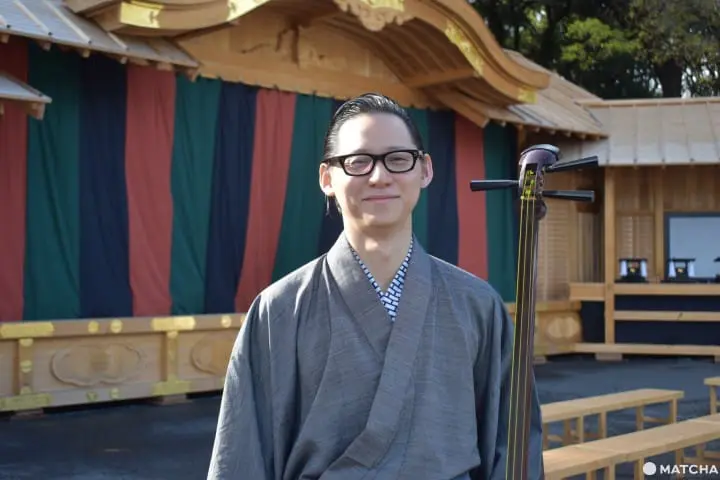
It’s been 17 years since Tomonosuke started playing the shamisen. However, he still considers himself a novice in the world of Bunraku, although he boasts a quite peculiar career.
“Born in a musical family, with my father a jazz pianist and my mother a violinist, I, too, nurtured a musical dream. I wanted to become a bassist and dedicated myself to learning the contrabass.”
Tomonosuke entered the world of music at an early age. He didn’t know nor take an interest in the traditional arts, but in his second year of high school, he heard a unique sound. “I could hear a beautiful low pitch tone coming from the television. It was the sound of the Bunraku shamisen.”
He didn’t enter the world of Bunraku as a performer. Instead, he was led to it by the sound of the shamisen. There were many different things between his prior studying of Western music and portraying Bunraku art using the shamisen. He confessed that he felt confused and hesitant.
The Deepest Emotions Expressed with Just One Sound

There are various types of the shamisen, but Bunraku uses futozao, a type of the shamisen that produces a strong and profound sound.
“Until I discovered Bunraku, I used to express my feelings through melodies. However, Bunraku allows one to express great grievance using simply one sound.”
It took him about 10 years to become a master on the differences between Western music and the Bunraku shamisen. It was his burden to bear due to his dream of becoming a professional bassist.
Portraying Everything – from Characters’ Feelings to the Weather
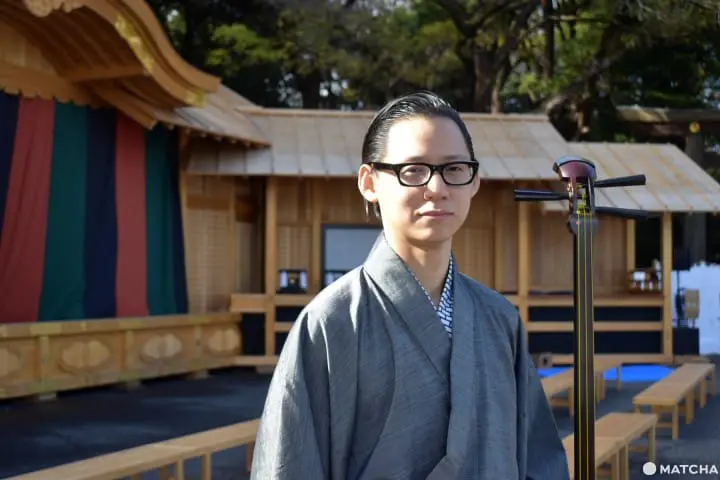
According to Tomonosuke, the shamisen has some common traits with Western music, although it might not seem like it at first glance.
“The shamisen tune is dictated by the Bunraku play featured in the program. However, it also depends on the hearing and understanding of the player him- or herself. Just like the sound of Beethoven’s “Symphony No. 9” differs depending on the conductor, the shamisen's sound differs depending on the player's comprehension and method of expressing the story.”
The shamisen helps the player enrich the storytelling, to deepen and widen it. Above all, there is only one shamisen player on stage during a Bunraku performance. That lone artist manages to bring forth the heart and soul of each character in the story – the child, the young lady, the warrior, or the elderly.
One shamisen is enough to make a bright, blue sky in the story breathtakingly vivid, or to narrate a vicious thunderstorm, or even a butterfly dancing around.
“It is not about playing the shamisen beautifully. Shamisen is about using different tones and tempo to back the storyline to express the feelings of each character clearly and accurately.”
This is why one cannot say the shamisen is just an accompaniment to a Bunraku story.
”The Power of the Narrator Extends Beyond Words”
Sakijudayu Toyotake, the Narrator

Mr. Sakijudayu. In the background, you can see the yuka, or the narrator’s seat.
Our last interviewee is Sakijudayu Toyotake, a prized narrator among novices. He is a tayu, the storyteller during Bunraku plays.
The narrator controls the progress of the story through storytelling. For each Bunraku tale, there is a script that the narrator has to follow. However, this should not be confused with simple recitation.
The narrators use a special technique called gidayubushi, which allows them to tell the story in a melodic manner. It might take you by surprise when you hear the narrator for the first time, and you might wonder where their voice comes from.
This hoarse, husky voice expresses a variety of emotions, bringing Bunraku stories to life.
A Balance of Performance and Bunraku Technique
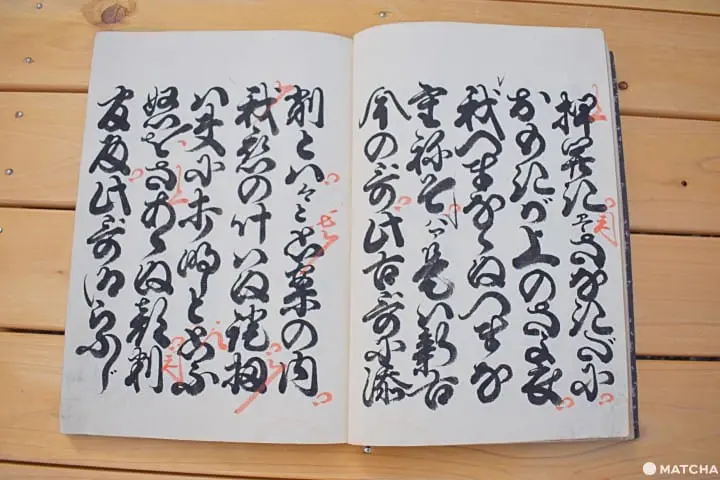
Bunraku tale scripts called yukahon. They are written in cursive style.
As it is the case with the shamisen, there is usually just one tayu on the stage. The narrator expresses the thoughts of each character and their circumstances, all by themselves.
“Many of the Bunraku programs are dynamic and theatrical, with a serious plot. To be able to express all of that all by yourself is quite a challenge. Even if, for example, the audience doesn't understand the language, they can understand when the character is biting their lip or clenching their teeth crying, or in a great rage. That vigor is more powerful than words, I’d say, and should be transmitted to the audience.”
The ability to narrate many different characters and situations, isn’t really what one refers to as “becoming the character”, according to Sakijudayu.
“There is a story about a narrator who poured too much emotion into expressing the characters and burst into tears, after which he got scolded. But that doesn’t mean one should narrate in a dull, simple manner.”
So, what is the secret behind the ability to perform various roles through narration? “In our world (of Bunraku), we call it ‘to narrate by breath’. It means to tell the story and the characters apart by coordinated, well-calculated breathing.”
At first, it seems a little complicated to try and understand the meaning of “narration by breath”. But, when watching a Bunraku play, you get an illusion of the character and the narrator being in the same room, even though they are not. That is how natural it seems - as if the characters themselves were narrating.
The reason why the puppets liven up in front of us and show us so many different expressions is precisely that “narration by breath” done by the narrator.
Bunraku – Like Bits of Scattered Fireworks
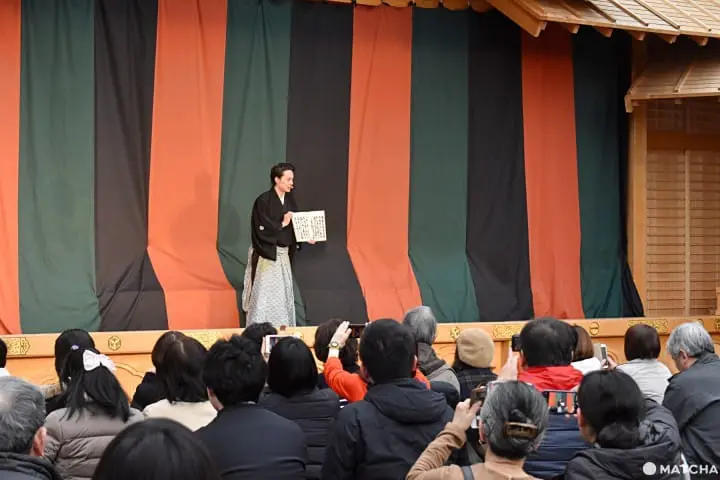
Mr. Sakijudayu, explaining the details of a Bunraku performance
Unbelievable as it may sound, Sakijudayu has never touched a shamisen or a puppet. One would think this would be helpful in order to understand the feelings of other performers and make the performance run more smoothly.
“I don’t need to understand it. Actually, I shouldn't be able to understand”, he says firmly. “For example, if I knew how to play the shamisen, as well, as soon as I hear the sound of it I would probably get distracted and base my narration upon it. If the narration and the shamisen were to fit each other perfectly, the role of the narrator would fall to the hands of the shamisen.”
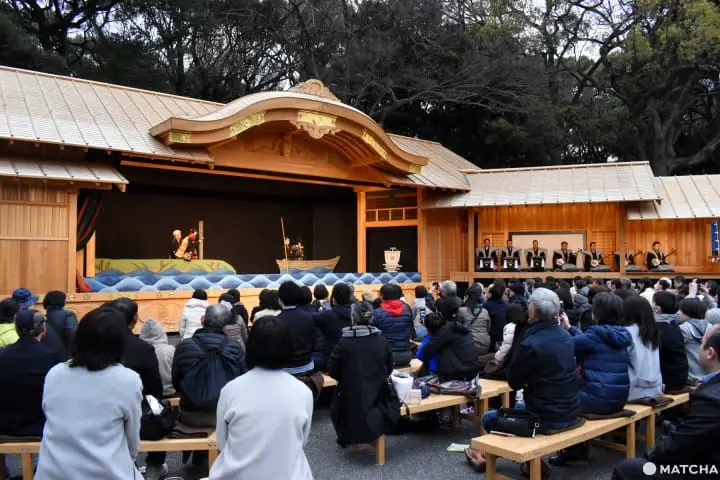
The performance "Nippon Bunraku" held March 2018. During this performance, several narrators and shamisen players appeared on stage.
Even though a puppeteer, a narrator, and a shamisen player share a stage, you won’t be able to see glances exchanged between them nor them adjusting their breaths to each other. Each is facing a different direction, doing his own thing. But, apparently, that is what makes a good Bunraku play.
“Each performer does their own show, and they somehow end up meeting at some point. That is what Bunraku is like. There should be no meeting on purpose – that turns it into something silly, a game. No, it is like a scattered fireworks display of art.”
The puppeteer, the shamisen, the narrator -- the three of them are doing completely different things, but to the eyes of a spectator, it all seems a perfect heart-throbbing story. That is what makes Bunraku so unique and so exciting.
What Makes Bunraku so Interesting?
There are many passionate fans of Bunraku. They are so devoted that they make rounds to Tokyo, Osaka, and other cities, just to enjoy a performance. How come Bunraku has the power to enchant people in that manner?
We addressed this question to master Kanya Yoshida. He told us the secret could lie “in the puppets”.
“Take the example of Kabuki theater. The first and the only thing you see are the mesmerizing actors. But, when it comes to Bunraku, there are the puppets in front of you. That allows the audience to get immersed in the story more, and to get lost in its world, too. The first time I watched a Bunraku performance, I felt like I had gone back in time to the Edo period. And the beautiful and noble puppets made my heart tremble and melt.”
Bunraku’s secret lies in its puppets, and the people who dedicate their lives to perfecting their artistic skills get up on stage and captivate the audience by working seamlessly, separately and together. This traditional performance has continued for 300 years due to its tenacious spirit, enticing content, and appealing form.
The more you get to learn about Bunraku, the more you get absorbed. In order to get to know more about the fascinating world of bunraku, don’t hesitate to pay a visit to the theater.
Where to Watch Bunraku Puppet Theater
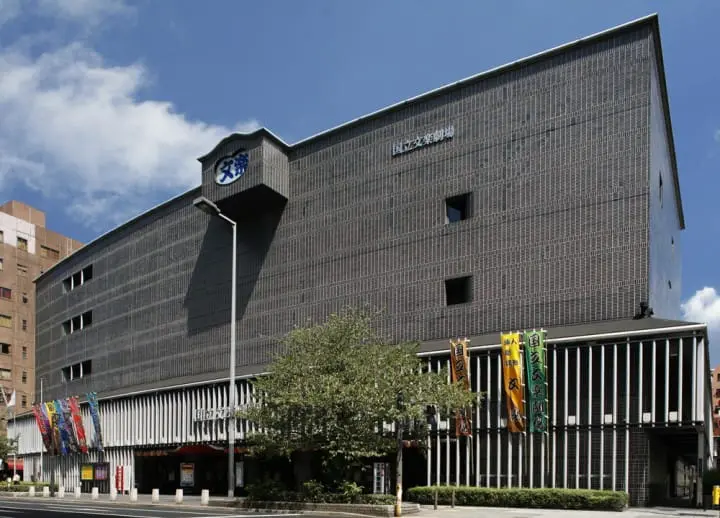
Picture courtesy of National Bunraku Theater
Two theaters that regularly have Bunraku performances are the National Bunraku Theater in Osaka and the National Theater in Tokyo.
In Osaka, the birthplace of Bunraku, you can enjoy Bunraku plays regularly at the National Bunraku Theater.
You can purchase the makumiseki, a ticket that allows you to watch one act on the day of the performance. This is an ideal choice for people watching a show for the first time. We recommend looking up information on the play and asking for an audio guide (Japanese/English) beforehand.
Bunraku performances can also be watched several times a year at Tokyo’s National Theater (small theater).
National Bunraku Theater Official Website:
https://www.ntj.jac.go.jp/english/access/facilities_04.html
National Theater Official Website:
https://www.ntj.jac.go.jp/english/access/facilities_01.html
You can make ticket reservations for both theaters online using this link (English):
https://ticket.ntj.jac.go.jp/top_e.htm
Other Bunraku Related Events
There are other irregular Bunraku related events, as well. Nippon Bunraku (Japanese), a performance organized by Nippon Foundation, is held every year outdoors.
The concept behind this Bunraku event is that unlike the Bunraku plays shown at the theater, the audience is allowed to drink and eat freely while watching a performance (it is normally forbidden to eat or drink at the theater).
This event will allow you to experience a recreation of the Edo period when Bunraku was a common form of entertainment for most city residents. The 2019 show is already over, but you can look forward to the one scheduled for 2020.
Take the chance to dive into the world of the traditional Japanese art of Bunraku on your next visit to Japan!
Read also
Made in cooperation with Kanya Yoshida, Tomonosuke Tsurusawa, Sakijudayu Toyotake, Nippon Bunraku, and NPO Bunrakuza.
MATCHA Editer.








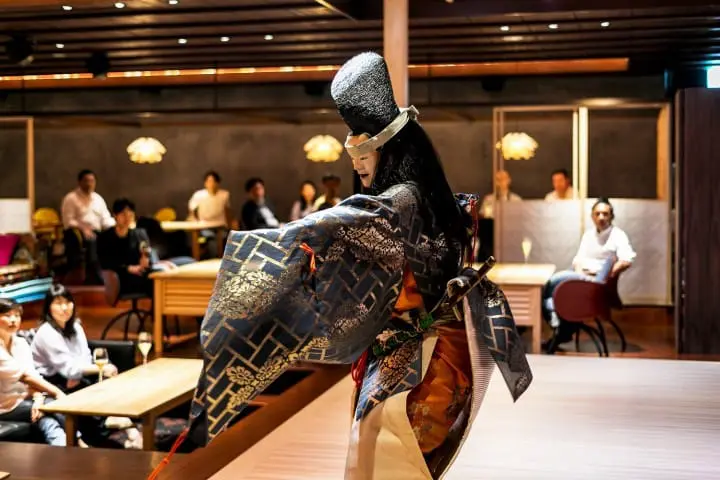
































![[Coupon Available] Attention Overseas Winter Sports Fans! Nagano's Sports Depot Has Evolved](https://resources.matcha-jp.com/resize/720x2000/2026/01/05-254819.webp)